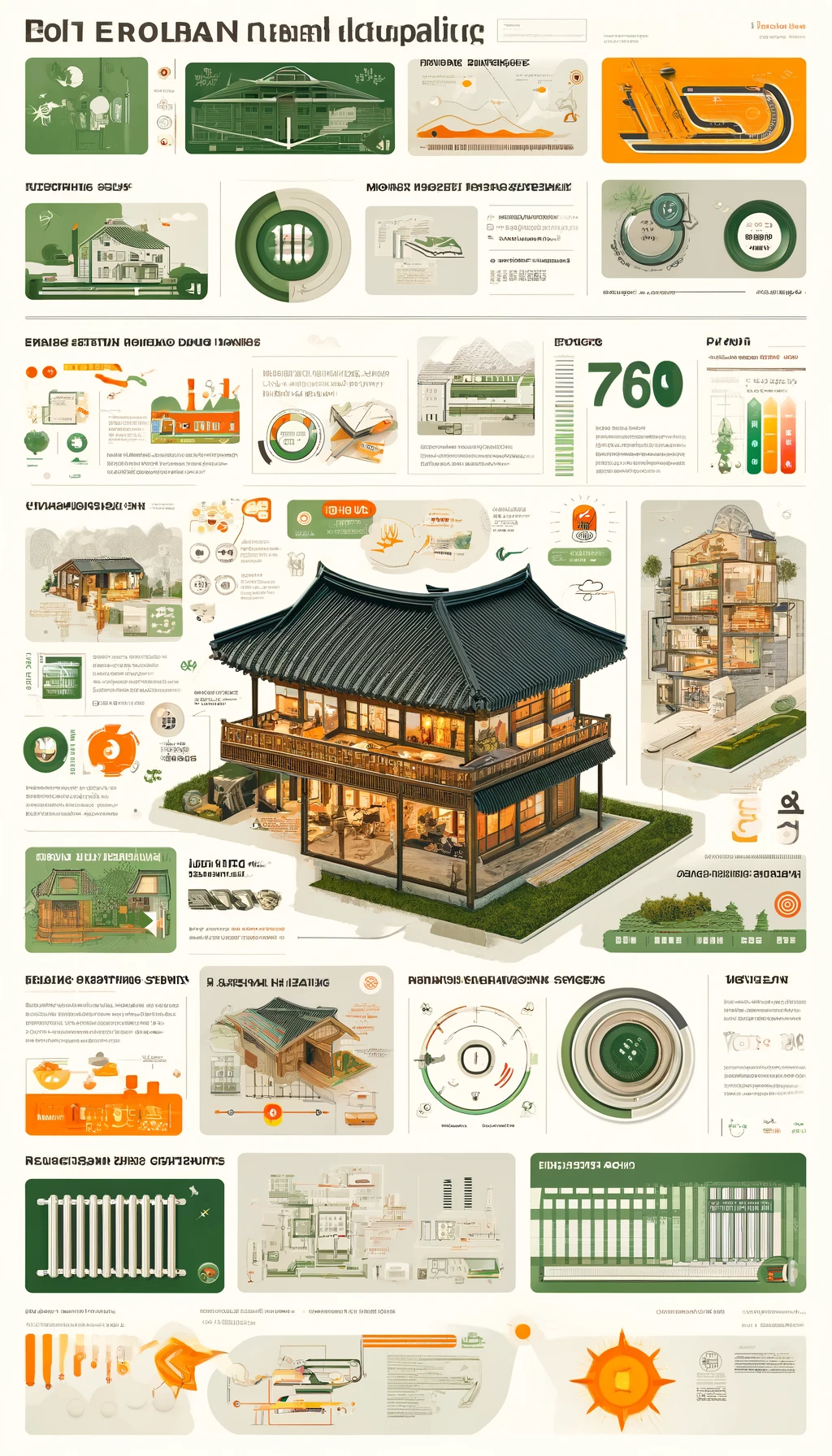목차
How Ondol Heating Influences Modern Sustainable Architecture
Introduction
In an era where sustainability is paramount in construction and design, the ancient Korean ondol heating system offers remarkable insights and contributions to modern sustainable architecture. This traditional method, characterized by its underfloor heating mechanism, has transcended its cultural boundaries to influence contemporary building techniques around the world. This blog post explores the integration of ondol-inspired technology into modern sustainable architecture, emphasizing its efficiency, environmental benefits, and influence on design paradigms.

Understanding Ondol
Before delving into its influence on modern architecture, it is crucial to understand the basics of the ondol system. Ondol, meaning “warm stone,” operates on a principle of heat transfer from a fire source through stone conduits under the floor, efficiently heating a space from the ground up. This system not only provided warmth but also maximized fuel efficiency by ensuring that the heat was not lost unnecessarily.
Sustainable Principles of Ondol
Efficient Use of Resources: Ondol’s design allows for the heat generated by burning wood or other biofuels to be stored in the stones and slowly released over time, reducing the need for continuous heating and minimizing fuel consumption.
Radiant Heating: Unlike forced-air systems that can lead to significant energy losses due to air leakage, ondol’s radiant heating method enhances thermal comfort with less energy, which aligns with modern sustainable practices.
Reduction in Energy Consumption: By heating objects rather than air, ondol systems provide warmth more effectively, thereby reducing the overall energy required to maintain comfortable indoor temperatures.
Influence on Modern Sustainable Architecture
Incorporation into Green Building Standards: Ondol principles are increasingly incorporated into green building standards, which prioritize energy efficiency and minimal environmental impact. Systems inspired by ondol are being designed to use sustainable energy sources such as solar power or geothermal energy, aligning with LEED certification requirements.
Influence on Thermal Mass Materials: Modern architecture utilizes materials with high thermal mass, such as concrete or stone, to absorb, store, and slowly release the heat—principles central to the ondol system. This method is particularly effective in climates with significant temperature fluctuations.
Design Innovations: The concept of underfloor heating has led to innovative floor layouts and open space designs in modern homes and buildings. By freeing up wall and ceiling space that would typically accommodate radiators or air ducts, architects can explore new aesthetic and functional possibilities.
Case Studies
Residential Projects: Numerous eco-friendly houses around the world now feature underfloor heating systems inspired by ondol. These homes report lower utility costs, improved air quality, and increased comfort levels.
Commercial Buildings: Some high-profile commercial buildings have adopted ondol-inspired heating to reduce their carbon footprint and enhance energy efficiency. This approach often forms part of a broader strategy that includes advanced insulation techniques and renewable energy sources.
Cultural and Educational Facilities: Museums, schools, and other institutions have implemented ondol-style heating to provide a stable thermal environment beneficial for both occupants and the preservation of artifacts.
Environmental and Health Benefits
Ondol’s influence extends beyond energy savings to encompass environmental and health advantages. The system’s lower operating temperatures and radiant heating method contribute to reduced airborne dust and allergens, which is a significant benefit in public health terms. Additionally, by reducing reliance on fossil fuels, these systems help lower greenhouse gas emissions, aligning with global efforts to combat climate change.
Challenges and Future Directions
Despite its benefits, the integration of ondol-inspired systems into modern architecture is not without challenges. These include the initial costs of installation, the need for robust insulation to prevent heat loss, and the adaptation of the system to various global climates. However, ongoing research and technological advancements continue to refine and adapt these systems for broader application.
Conclusion
The ondol heating system, with its ancient roots and sustainable characteristics, offers valuable lessons for modern architecture. As the world increasingly focuses on sustainable living, the principles underlying ondol provide a blueprint for efficient, eco-friendly building practices that enhance occupant comfort while reducing environmental impact. The ongoing evolution of ondol-inspired technologies is a testament to the enduring relevance of this traditional Korean innovation in the quest for sustainable development.
Go Blog Home
